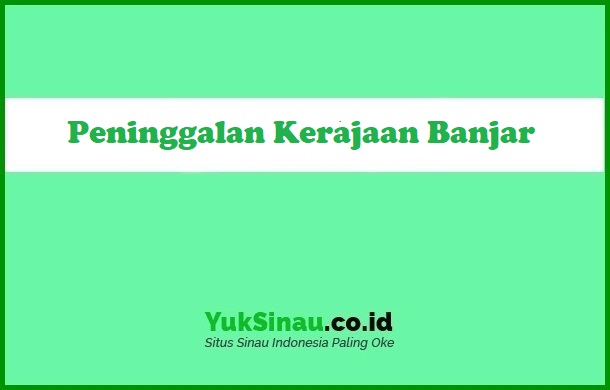Leaving the Banjar Kingdom
Leaving the Banjar Kingdom – This time yuksinau.com will talk about leaving the Banjar Kingdom, not only will we also talk about history, the names of the King, aspects of people's lives, a time of success, time of decline, relic, along with the cause of the collapse of the Banjar Kingdom. Check out the full review below.
Table of Contents
History of the Banjar Kingdom
The coming of the Banjar government influenced by the State of Daha at that time was a powerful government. The king of the state of Daha was the Emperor of Sukarama who gave the will to Raden Samudera who was the son of Princess Galuh Intan Sari and his father Manteri Jaya who would succeed him.
From the agreement made by Ocean guessing, very threatened by the many sons of Maharaja Sukarama who wanted to be a substitute for his father. On this issue, Prince Raden Ocean escaped to the Barito river estuary. After the death of Maharaja, the title of king was replaced by Prince Mangkubumi and then resumed by Prince Tumenggung.
Raden Samudera, hiding in the mouth of the Barito River, protected by a group of Malay people who still live in the area. In the Malay era this rapidly developed to the city of Banjarmasin because of the many traders who stopped or settled.
At that time Raden Ocean saw whether Banjarmasin had good potential against the Daha State power center. In time, Banjarmasin power still stands after Malay people lifted Ocean as head of state in their territory.
Raja – Raja / Sultan of Banjar
Below are the names of the Kings or in the Banjar region at that time called the sultan starting from the year 1952 that is, led by Sultan Suriansyah until the year 2010 led by Sultan Haji Khairul Saleh Al-Mu 'tashim Billah.
| No | Name of Sultan | Leadership Period |
| 1 | Sultan Suriansyah. | 1520 s/d 1546 |
| 2 | Sultan Rahmatullah bin Sultan of Suriansyah. | 1546 s/d 1570 |
| 3 | Sultan Hidayatullah I bin Rahmatullah. | 1570 s/d 1595 |
| 4 | Sultan Mustain Billah bin Sultan Hidayatullah I. | 1595 s/d 1641 |
| 5 | Sultan Inayatullah bin Sultan Mustain Billah. | 1641 s/d 1646 |
| 6 | Sultan Saidullah bin Sultan Inayatullah. | 1646 s/d 1660 |
| 7 | Sultan Ri & rsquo; ayatullah bin Sultan Mustain Billah. | 1660 s/d 1663 |
| 8 | Sultan Amrullah Good Kasuma bin Sultan Saidullah | 1663 s/d 1679 |
| 9 | Sultan Agung / Pangeran Suria Nata (ke-2) bin Sultan Inayatullah. | 1663 s/d 1679 |
| 10 | Sultan Amarullah Good Kasuma / Syrian goose / Saidillah bin Sultan Saidullah. | 1679 s/d 1700 |
| 11 | Sultan Tahmidullah I / The Yellow Son of Sultan Amrullah / Tahlil-lullah. | 1700 s/d 1717 |
| 12 | The Kasuma Show is Taken | 1717 s/d 1730 |
| 13 | Sultan il-Hamidullah / Sultan Yellow bin Sultan Tahmidullah I. | 1730 s/d 1734 |
| 14 | Sultan Tamjidullah I bin Sultan Tahmidullah I. | 1734 s/d 1759 |
| 15 | Sultan Muhammadillah / Muhammad Aliuddin Aminullah bin Sultan Il-Hamidullah / Sultan Yellow. | 1759 s/d 1761 |
| 16 | Sunan Nata Alam (Prince Mangkubumi) bin Sultan Tamjidullah I. | 1761 s/d 1801 |
| 17 | Sultan Sulaiman al-Mutamidullah / Sultan Sulaiman Saidullah II bin Tahmidullah II. | 1801 s/d 1825 |
| 18 | Sultan Adam Al-Watsiq Billah bin Sultan Sulaiman al-Mutamidullah. | 1825 s/d 1857 |
| 19 | Sultan Tamjidullah II al-Watsiq Billah bin Pangeran Ratu Sultan Muda Abdur Rahman bin Sultan Adam. | 1857 s/d 1859 |
| 20 | Sultan Hidayatullah Halilillah son of the late Queen Sultan Abdur Rahman bin Sultan Adam | 1859 s/d 1862 |
| 21 | Prince Antasari bin Pangeran Mashud bin Sultan Amir bin Sultan Muhammad Aliuddin Aminullah. | 1862 |
| 22 | Sultan Muhammad Seman son of the Prince of Assassination of Amiruddin Khalifatul Mukminin. | 1862 s/d 1905 |
| 23 | Sultan Haji Khairul Saleh Al-Mu & rsquo; tashim Billah bin Gusti Jumri bin Gusti Umar bin Pangeran Haji Abubakar bin Pangeran Singosari bin Sultan Sulaiman al-Mu & rsquo; tamidullah. | 2010 |
Aspects of Life of the Banjar Government
- Political Life
The form of the Banjar government at its founding was already influenced by the Demak Government. Which is a logical consequence of the reign of Kingdom A being able to establish a kingdom with the help of Kingdom B, so Government B participates in the form and function of Government A.
In terms of the form of government built according to Javanese customs, the king during his reign was not pure (seabsolut) the kings of Java. In addition, the offspring who have wealth also influence the determining factors on the position of the king. In essence the government is aristocratic which is owned by the nobles where the king is a mere unifying symbol.
The Sultan of the Banjar Kingdom was the supreme ruler , who has power in political and religious matters. Under the sultan's power there is a Crown Prince known as the Sultan of Muta. The Crown Prince has no particular office but the Sultan's aide. Next to the Sultan, there is a board of the Crown House made up of nobles and Mangkubumi.
Mangkubumi is a sultan's assistant who has great authority in government life. Mangkubumi in the government was accompanied by the Minister of Handling, Minister of Foreign Affairs and Minister of Earth assisted by 40 attitude minister. At each attitude minister has as many followers 100 person. Within the royal circle there are many servants or officers. As follows:
- 50 Pangadap or Pamarakan people under Rasawija perform various tasks in the palace.
- 40 Singabana or Parawila people under Singataka and Singapore serve as police
- 40 Hunters under Puspawana were in charge of the king during the hunt
- 50 Mandung people under Raksayuda are in charge of guarding the palace ward
- 40 the Sarageni people under Saradipa were in charge of weapons
- 40 the Menagarsari under Sarayuda were in charge of the king
- 50 the Sarawisa people under Sarabraja's leadership were in charge of the army
- Social and Economic Life
During the time of the Banjar community there were triangular pyramid structures and social roles. The top layer is the ruling minority. This group consists of noblemen, royal family.
The middle layer was filled with religious leaders who solved religious legal issues in the kingdom. The lowest layer is the majority group filled by farmers, fisherman, traders and as follows.
Economic progress in South Kalimantan experienced a rapid increase in the 16th to 17th centuries. Banjarmasin belongs to a very large trading city to achieve a goal of royal prosperity.
South Kalimantan also has very strategic waters as a flow of trade traffic. In trade, pepper as the biggest export commodity in the Banjar Kingdom.
other than that, Banjar Kingdom also has iron and metal products. Metal and iron industries are in the territory of the State. The ability and expertise of metal casting includes bronze, which is able to produce various goods for export.
At the time, the 17 regions of the State were known for making shipbuilding and weapons such as hammers, cover, machete and others. While, expertise in making jugs as a form of craft that has been developed from generation to generation as a sideline besides farming. Furthermore, it is also well-known as a carpentry business involving artisans , board saws and beams, and so on.
- Cultural Life
Banjar residents have 3 group. First the Banjar Muara group (Weekend), the two Banjar Batang Banyu groups (Suku Maanyan), and the third is the Banjar Hulu group (Tribal Hill).
In every century of history, Banjar culture has shifted and changed so that its form varies from time to time. Then this can also be referred to as a manifestation by the way of thinking of a group of residents in the region in a certain period.
In the history of events, that the Banjar community started from a mixture of Malay culture with hill and maanyan culture as the core, subsequently formed the kingdom of Tanjung Pura with the Buddhist religion it adhered to. Second, first mix of culture with Javanese culture, where cultural, Maanyan, and the Hill became the nucleus that formed the Dipa State with Buddhism.
The third is a guide to the use of Javanese culture that shaped the state of Daha with Hinduism. Fourth followed by the Daha Government in forming the Islamic Banjar kingdom from the Ngaju tribe, Maanyan and the Hill. From this fourth unity came the culture of the Banjar Kingdom.
Banjar Kingdom Success Time
During the reign of Sultan Mustain Billah was the center of the Banjar Sultanate which was transferred to Kayuwangi, Martapura. The Banjar Sultanate experienced a period of success in the 17th century, during the reign of Sultan Saidullah (1637 – 1642), Sultan Mustain Billah (1595-1620) and Sultan Inayatullah (1620-1637)
When the Dutch came and caused chaos, The Sultanate of Banjar experienced a decline or loss. As a result the royal capital was transferred to Amuntai, next to the mine, and Batang Banju. The VOC should have been coming to Banjar since years 1606 to ask for the pepper monopoly but their efforts have not yet been reached. Then the contract was signed by the Netherlands and the Banjar Sultanate Syahbandar 1635 pepper trade was monopolized by the Dutch. After an agreement was made between the VOC and Sultan Martapura the resistance to the Dutch was reduced.
Banjar Government Depression Time
Banjar Kingdom is progressing as a result of its living in this kingdom as a free port, however, the arrival of foreigners in the region sparked divisions in the royal territory.
The arrival of the downgraded Dutch Colonial Government and in the customary affairs of the kingdom is proof that foreigners entering the Banjar Kingdom will create divisions within the kingdom..
The role of foreign nations in court matters is one of the main factors causing the war between the Banjar Kingdom and the Dutch East Indies Colonial Government.
In the early days the Banjar Kingdom had a very good relationship with the colonial government of the Dutch East Indies, by participating in the colonial government's dealings with the government which resulted in a conflict of relations between the two parties would eventually lead to a war on maintaining power in the South Kalimantan.
the history of the battle is also known as (The Banjar War). The battle of the Banjar Kingdom took place in two stages, 1st run since the year 1859 s/d 1863, which has been the 2nd run since the year 1863 s/d 1905. The protests that lasted for half a century ended with the defeat of the Banjar Kingdom.
With the destruction of the Banjar people since the year 1905, So it was marked by the destruction of the era of the Banjar Kingdom which was established in the year 1520.
Leaving the Banjar Kingdom
Below are the Banjar Government Remedies, among others:
1. Amuntai Great Temple
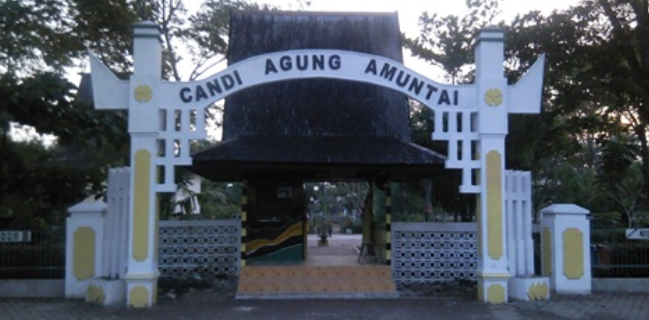
Should, temple buildings were not erected during the Banjar administration, but the sultanate was established. This temple was founded in the year 740 which was then located in the Amuntai area, namely the leadership of the Banjar Sultanate.
Thus this temple was not established during the Banjar administration but this temple must be related to the Banjar Kingdom, by looking at the history of the Banjar Sultanate.
2. Sultan Suriansyah Mosque
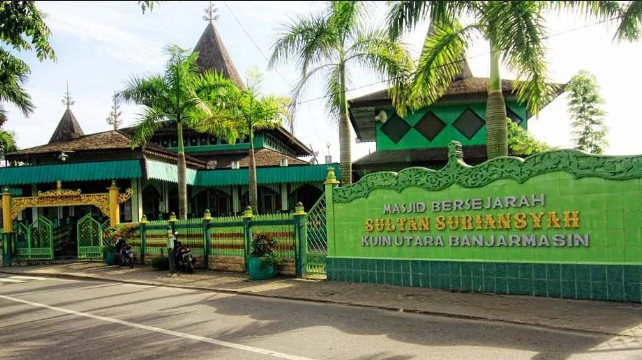
The mosque building was erected during the reign of Sultan Suriansyah, namely the 1st king who was the founder of the Banjar Kingdom, in the Banjarmasin area, Like Utara, North Banjarmasin. This area is known as the Banjar Lama, because the capital of the 1st Sultanate of Banjar.
The mosque is located on the Kuin River which has a beautiful traditional banjar patterned architecture and the roof is separated between the main buildings. The mosque was built in the era of the sultan Suriansyah, the 1st longest mosque in South Kalimantan.
3. Burial of the Banjar Sultanate
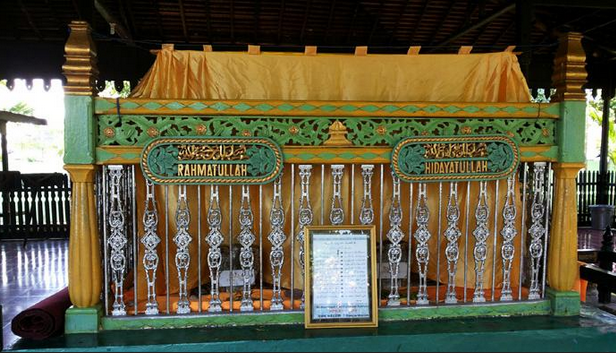
The place where the king who led the kingdom was buried with the sultanate system has existed until today or now which is a historical evidence of the existence of the empire and has an influence on the spread of Islam on the island of South Kalimantan.
The kings buried in this cemetery are among them Raja Mustain Billah, Raja Inayatullah and Sultan Suriansyah along with others.
4. Government appliances
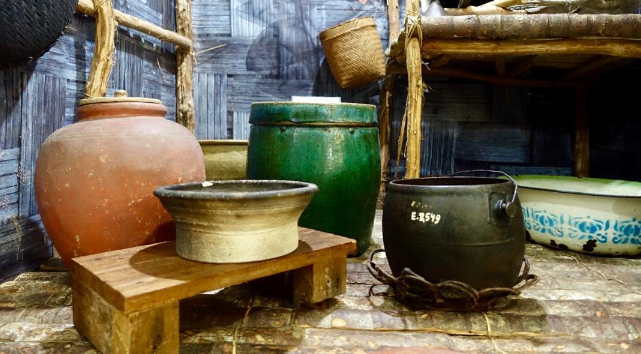
Historical evidence exists of the Banjar Kingdom that covered the furniture, then stored in the Museum of Stomach Mangkurat which consists of various sources, tools used by the Banjar Sultanate, Government stamps and other furniture.
Causes of the Fall of the Banjar Kingdom
In the 19th century, The British began to watch Borneo after the British threw the Netherlands in the year 1809. 2 Next year, the British put residents in Banjarmasin, Alexander Hare. But it was not long before the Dutch brought them back.
The next step in the history of South Kalimantan began with the arrival of the people against the Dutch. Prince Antasari emerged as the leader of the failed people. Prince Antasari died on that date 11-10-1862, then grandchildren formed PEGUSTIAN as a follow-up to the Banjarmasin kingdom, eventually eliminated the Dutch Marsose Malay army, during the reign of Sultan Muhammad Seman whose leader was killed in battle. South Kalimantan after that was fully ruled by the Dutch
Such is our discussion of the material of the Banjar Kingdom. Also read his other articles on Remembering Government History. Thank you for reading and visiting us, hope it will be useful.
Other Articles :
- Developing Countries on the African Continent
- Advanced Countries in the Americas
- Advanced Countries on the African Continent
- Advanced Countries in Europe
- Advanced Countries in Asia
The post Banjar Kingdom Remembrance appeared first on YukSinau.co.id.
